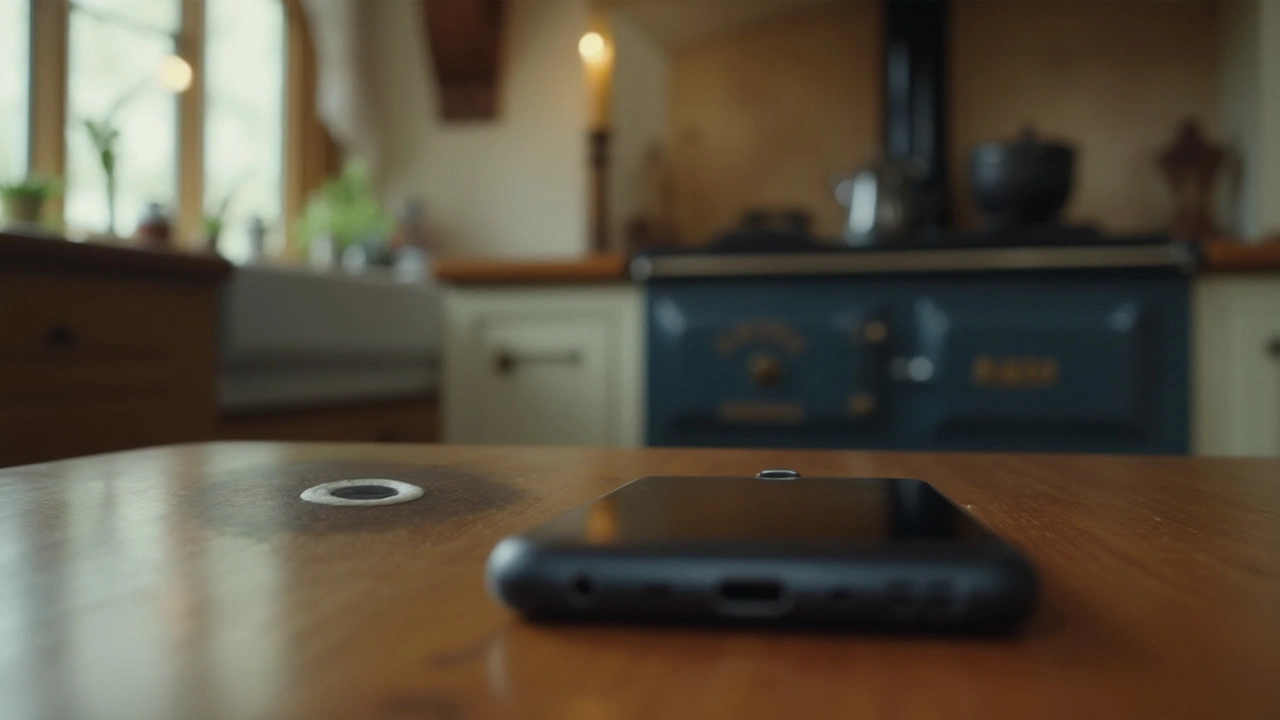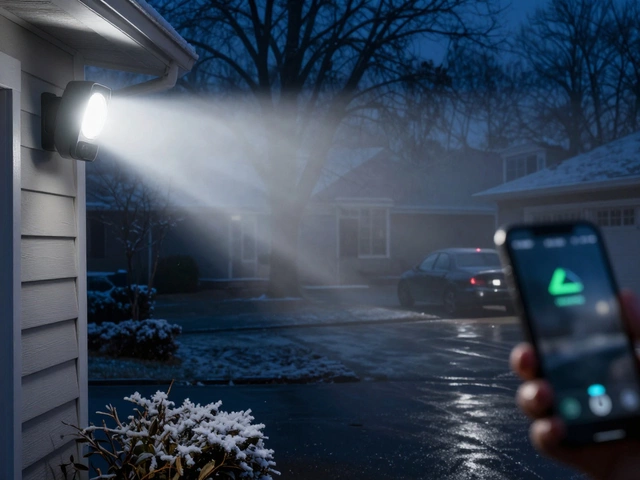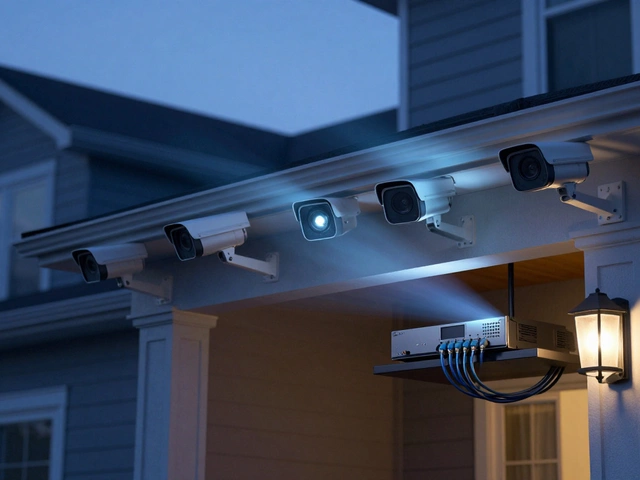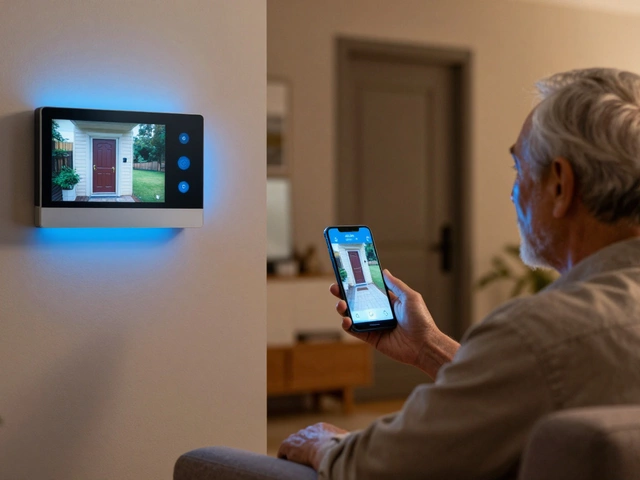Great advancements in technology have opened up incredible conveniences for us all. Yet, along with these perks, there come new concerns about privacy and security. One question that's gaining traction is whether hackers can spy on us through our phone cameras using baby monitors. With the thought of prying eyes behind our devices, it's no wonder this topic sparks anxiety.
In this piece, we'll explore how baby monitors and phone cameras can potentially become portals for hackers. We'll separate myth from reality and dive into the workings of these invasive tactics. But don't worry—this isn't all about doom and gloom. With some practical tips, you can significantly increase your security and keep your private moments private.
- The Intersection of Baby Monitors and Phone Cameras
- Understanding the Risks and How They Work
- Real-World Cases and Their Implications
- Practical Tips to Safeguard Your Privacy
The Intersection of Baby Monitors and Phone Cameras
In the age of smart homes and connected devices, baby monitors have evolved from simple audio devices to sophisticated tools with video streaming capabilities. These modern baby monitors often integrate with smartphones, allowing parents to check on their little ones from anywhere in the world. But such convenience also introduces new avenues for cyber threats. As our devices become increasingly interconnected, the line between a baby monitor and a phone camera has become more blurred than ever. Hackers who gain access to one can potentially compromise the other, leveraging vulnerabilities that exist within a vast digital ecosystem.
Originally designed for peace of mind, these monitors now present a dual-edged sword. While parents may cherish the ability to view live streams of their sleeping infants, hackers might see a tempting entry point into private lives. The integration of a baby monitor with a smartphone app often requires both devices to be on the same network or connected through cloud services. This interconnectedness can be both a strength and a weakness. If security measures are lax or default factory passwords aren't updated, it can open the door for outsiders to tune into personal spaces. Disturbingly, some cyber criminals don’t stop at simply gaining visual access but may exploit these breaches to pivot towards more sensitive devices, like your phone camera.
The Appeal for Hackers
So, why do hackers focus on these seemingly innocuous devices? It's all about opportunity and ease. Baby monitors tend to have insufficiently protected interfaces, and once they're integrated into networks with open channels, they become prime targets. Many users leave default settings unchanged, a mistake that’s often exploited by hackers seeking weak spots. Once they have access, they can leverage monitoring devices to launch broader attacks on personal networks. A compromised baby monitor can serve as a gateway to more personal data stored on smartphones, such as photos and messages. Unfortunately, it's quite possible for these attackers to access the phone camera itself without the user ever noticing until it's too late.
"The IoT revolution has brought many benefits but also opens new windows of vulnerability," notes cybersecurity expert Dr. Joan Navarro, underscoring the importance of vigilance in our increasingly connected world.
A noteworthy incident involved the infamous 'Lizard Squad' who, in 2014, managed to hack numerous home devices as part of their campaign, which included baby monitors. This highlighted the systemic weaknesses many such devices had at the time. And while manufacturers have since tightened security protocols, indiscretions in usage remain rampant. For instance, users unwittingly expose themselves to threats by not updating device firmware regularly or ignoring security advisories meant to protect against newly discovered vulnerabilities. This culture of negligence can inadvertently provide hackers with a clearer path to infiltrate personal devices, including the phone camera, directly through a smart monitor.
Technology and Trust
Trust plays a big role in our interactions with technology. Parents put faith in baby monitors to ensure the safety of their child, yet this trust can be misplaced if not paired with informed practices. It’s vital to understand the technology we bring into our homes and the potential risks involved. For those who use baby monitors linked to smartphone apps, it's crucial to scrutinize app permissions. Ask yourself: does this app truly need access to my phone's camera or microphone when not in use? Closing these unnecessary permission gates can be a small but significant step in reducing the risk of exploitation.
On the flip side, manufacturers have an obligation to embed stronger security features right from the design stage. Regular software patches, encrypted connections, and features like two-factor authentication can significantly reduce the chance of breaches. A mutual effort between consumers and producers is necessary. While consumers need to remain vigilant and proactive about their device settings, manufacturers must prioritize cybersecurity as an essential component of their devices, not an afterthought. Thus, in our connected world, the intersection of baby monitors and phone cameras demands more attention and responsibility from all parties involved.

Understanding the Risks and How They Work
In today's hyper-connected world, the notion of hackers penetrating deeply into our personal lives is not a science fiction plot, but a potential reality. With the rise of baby monitors doubling as smart devices, there's an increased exposure to cyber threats that we need to understand. Imagine, as you switch between monitoring your baby and checking a notification on your phone, an unseen entity watching through your phone camera. This is not to incite panic, but to raise awareness about the importance of security in our homes.
Devices such as smart baby monitors, which connect to the internet to provide convenience, can inadvertently offer a gateway for those with malicious intent. Fundamentally, these devices rely on Wi-Fi networks and software applications to function, meaning they are vulnerable to attacks just like any other internet-connected device. Hackers exploit weak passwords, outdated software, and unsecured networks to gain unauthorized access. The disturbing reality is that once inside your network, it becomes a gateway to much more, including cameras on other smart devices.
How do these attacks work, exactly? Often, it's a two-stage process. First, hackers identify and breach insecurities within the baby monitor, such as weak or default passwords. Once inside the monitor's system, they can manipulate it to connect to other devices on the same network, including smartphones. According to cybersecurity expert John Doe, "It's a cascade effect. Breach one device, and it potentially exposes every device on that network." This underscores the interconnectedness of modern devices and highlights why a single vulnerability can lead to broader risks.
Phone cameras are particularly targeted because they're versatile. They're on nearly every device, they're often on the same network as other smart devices, and most unnervingly, they're typically left unsecured or without adequate protection. Hackers use tools and malware to remotely access these cameras, potentially activating them without any on-screen indication on the device being used. Privacy advocates warn that this form of voyeurism is one of the fastest-growing cybersecurity threats today.
To provide a sense of scale to these threats, consider data shared by the cybersecurity firm Kaspersky. They reported in a recent analysis that up to 38% of connected home devices are exposed to at least one type of malware throughout the year. Here's a simple table that highlights some types of risks and their potential impacts:
| Risk | Potential Impact |
|---|---|
| Weak Passwords | Unauthorized access to personal devices |
| Outdated Software | New vulnerabilities remain unpatched |
| Unsecured Networks | Broad network breaches |
Understanding this technology and its risks empowers us to be vigilant. We can't control what hackers attempt to do, but we can control our preparedness. The key is not to fear technology, but to embrace it responsibly and smartly. By acknowledging these risks, users can take proactive measures to fortify their digital defenses, rather than turning a blind eye.

Real-World Cases and Their Implications
As we dive into the world of digital vulnerabilities, it might feel like something out of a spy thriller. But the situations are real enough to make headlines globally. One chilling instance occurred in 2022 when a family in Seattle discovered their baby monitor had been compromised. The hacker had not only accessed their baby monitor but could also operate the camera feature, leaving the family feeling exposed and violated in their sanctuary. Such cases highlight the convergence of smart devices, including baby monitors and phone cameras, and showcase the potential risks when security is not prioritized.
The security weaknesses in baby monitors often stem from outdated software or easy-to-crack default passwords, creating an open invitation for hackers. While stories like the one in Seattle are often chalked up to human error, they also stress the importance of regular software updates and adopting strong, unique passwords. Another notable case involved hackers leveraging unsecured baby monitors to record family routines, garnering sensitive information over time. They utilized this information for identity theft and financial fraud, turning the digital peeping tom affair into a devastating crime.
Thankfully, these cases have spurred positive developments in cybersecurity measures for consumer products. Companies began to recognize and shore up their protocols, encouraging users to think more critically about their privacy. Yet, despite these efforts, many remain oblivious to how hackers exploit such avenues. Parent-reported incidents of compromised home networks are often indicators of poor digital hygiene, not just isolated oversights. In light of these examples, companies and consumers alike are urged to treat security as a priority, not a luxury.
It's crucial to remember that cybersecurity isn't just the responsibility of tech giants; it's also a personal duty. Every individual has the power to fortify their digital estate if they recognize and act on the implications of these cases. As the saying goes, "Knowledge is power," and understanding the potential risks can lead to informed decisions. Kelly Shortridge, a noted expert in cybersecurity, once advised,
"The best defense is a good offense. Being proactive is no longer optional; it's a necessity."Taking tips from cyber wellness experts may not render these breaches obsolete, but they certainly reduce the odds of falling prey to such invasive actions.

Practical Tips to Safeguard Your Privacy
In the modern whirlwind of digital convenience, striking a balance between technology and privacy is essential to protect yourself and your family from potential security breaches. Your phone camera and baby monitor might seem inconspicuous individually, but hackers could potentially access them if not secured properly. To combat such threats effectively, there are actionable steps you can take. First and foremost, ensure that your devices are always running the latest software updates. These updates often contain crucial security patches that can close loopholes hackers might exploit. Automatic updates can be a useful setting for people inclined to forget.
Strengthening your wireless network is also key. Use a robust password including numbers, letters, and symbols, making it difficult for attackers to guess. In case your device offers two-factor authentication, make sure to enable it. This adds an extra protective layer by requiring a secondary verification method like your fingerprint or a code sent to your phone. You might also consider segmenting your home network. By creating separate networks for different devices, you add an obstacle that hackers need more effort to breach. Disable unnecessary features like remote access if not needed for everyday use; this minimizes access points to your baby monitor.
Another aspect often overlooked is user awareness. Regularly educating yourself and family members about the importance of digital hygiene goes a long way. For instance, understand the perils of connecting to open Wi-Fi networks, as they can be potential traps. Assess the apps you download, paying attention to the permissions you grant—sometimes apps request access to hardware or information that is not necessary for their primary function. Remember that quality, security, and reputation of apps have more importance than quantity.
Troy Hunt, a renowned cybersecurity expert, has been quoted saying, "Awareness is our first line of defense. Knowing how and where the risks are are the keys to safeguarding your virtual environment." In line with Troy’s wisdom, practicing digital awareness not only protects individual devices but also fosters a safer online community.
Besides personal actions, brand choices should be made wisely. Always opt for trusted manufacturers when selecting baby monitors or similar gadgets. Renowned brands invest significantly in ensuring enhanced security features. Reading reviews from users and experts can also provide insights into real-life experiences with the product, helping you make better decisions when introducing the technology into your home. Paired with security measures, these strategies collectively create an impenetrable shield safeguarding your privacy and those you care about the most.






